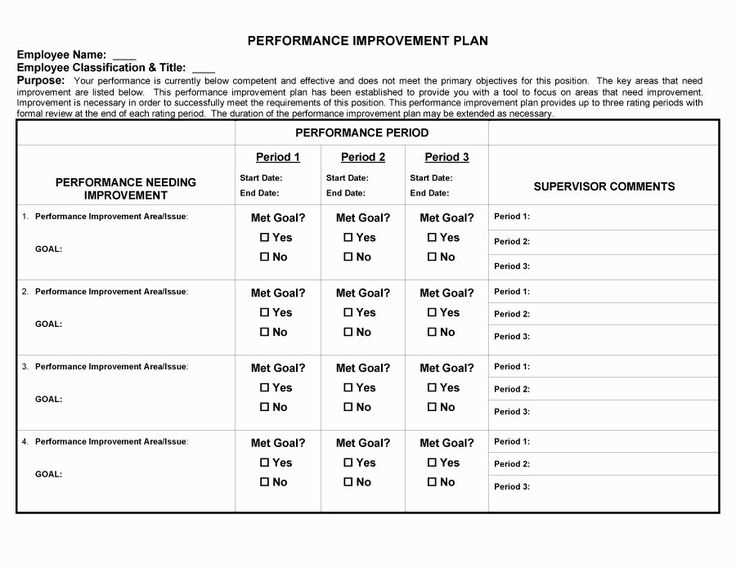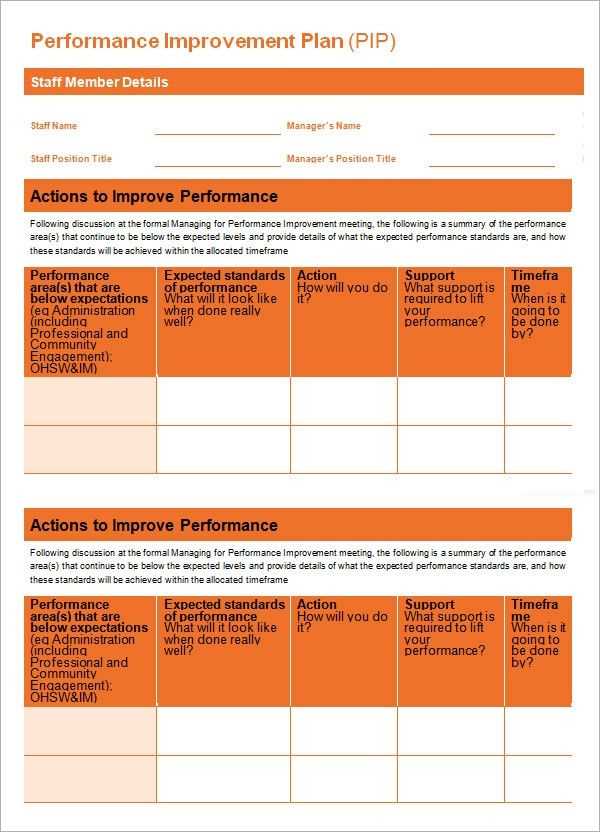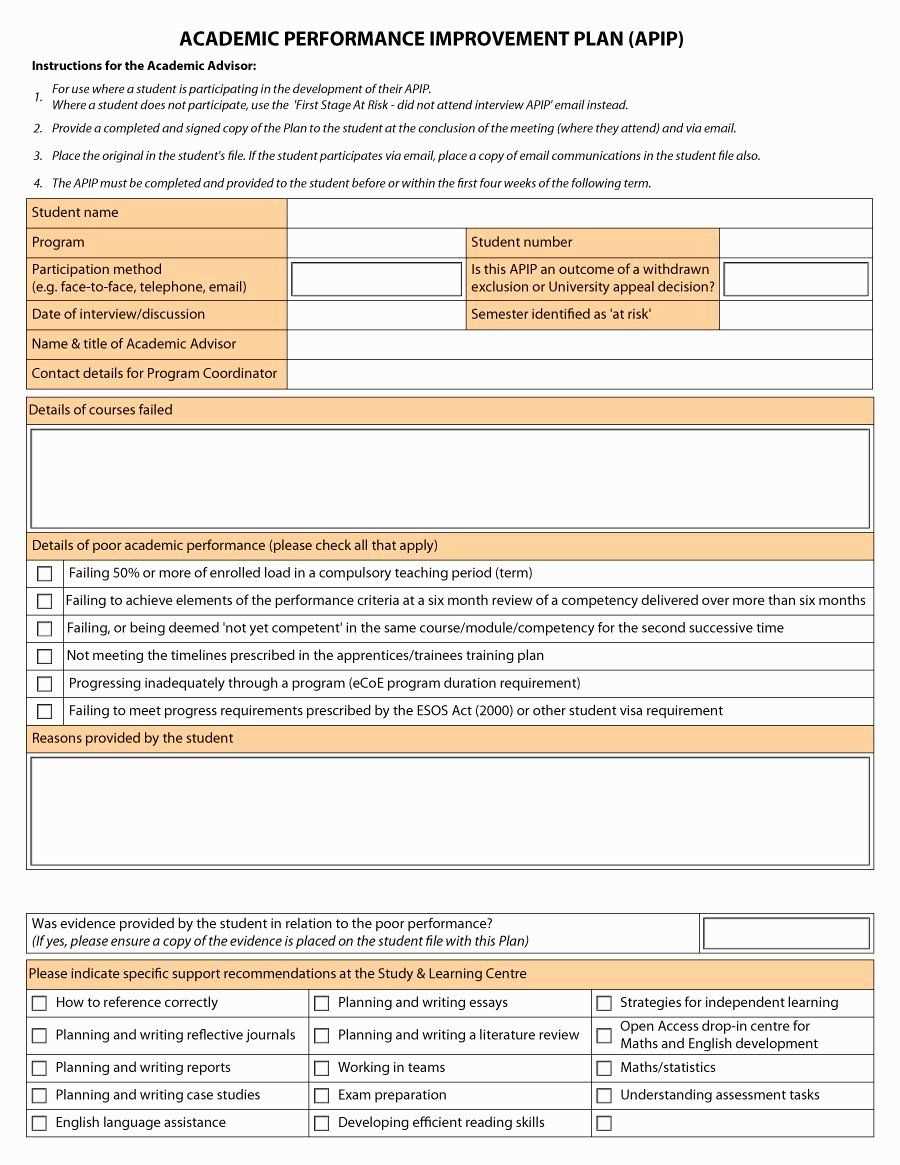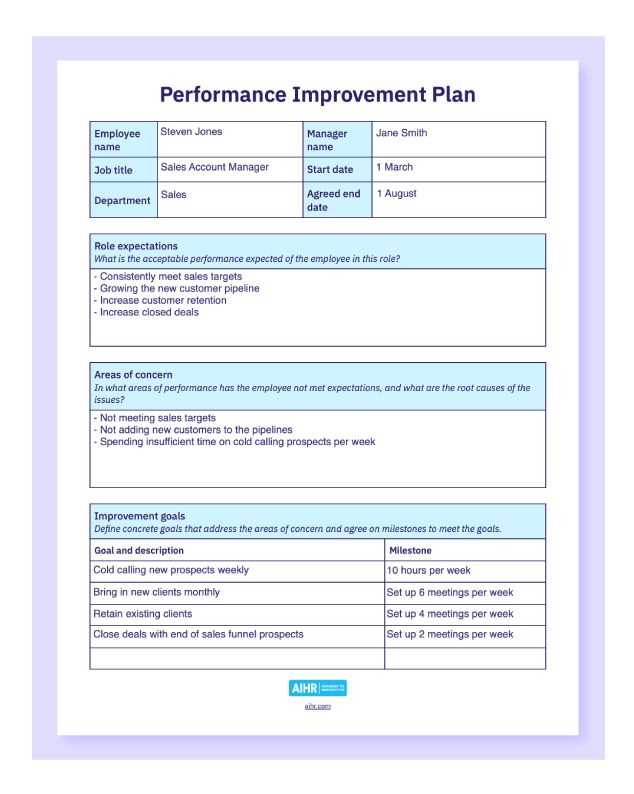Performance improvement plan letter template

Begin with a clear statement outlining the areas that require improvement. Be specific about the expectations and how they align with the overall goals. Provide measurable objectives that will help track progress over time. Each goal should be achievable, with a set timeline for completion.
Set clear expectations for the employee’s performance. Offer a detailed description of the actions or behaviors that need to change. Make sure the tone is constructive, focusing on positive growth and the steps needed to reach the desired outcome. This clarity allows both parties to focus on the same target.
Address the support available, such as training, mentoring, or resources, that will help the employee meet the goals. Specify how and when feedback will be provided to ensure consistent guidance. Make sure the employee understands their responsibility and the commitment needed to improve performance.
Set follow-up dates for progress reviews. These check-ins ensure the plan stays on track and allow for adjustments if necessary. Both the employee and the manager should commit to these meetings to maintain focus on performance improvement.
Performance Improvement Plan Letter Template
Begin the letter by clearly identifying the specific performance issues. Detail how these concerns have been affecting the overall productivity or team dynamics. Make sure to explain each instance where performance did not meet the expectations, using factual examples to avoid ambiguity.
Clear Expectations and Action Plan
Outline the performance goals and expectations the employee must meet moving forward. List measurable objectives with deadlines and specify the resources or support available to help achieve these targets. This will ensure clarity on what success looks like and provide the employee with the necessary tools for improvement.
Consequences and Follow-up

Address potential consequences if the performance expectations are not met, and set a clear timeline for follow-up meetings. Reassure the employee that this plan is meant to guide improvement, not to penalize, but make it clear that continued underperformance could lead to further actions. End on a constructive note, emphasizing your commitment to helping them improve and succeed.
Understanding the Purpose of a Performance Improvement Plan
A Performance Improvement Plan (PIP) serves as a structured process to address areas of underperformance and set clear expectations for improvement. The main goal of a PIP is to guide employees toward meeting the desired performance standards through targeted support and feedback. This plan offers a clear framework for addressing performance gaps, outlining specific goals and timelines for improvement.
Clarifying Expectations
A PIP helps clarify performance expectations by defining specific, measurable objectives. This transparency allows employees to understand what is expected of them, providing a direct path for improvement. With these clear benchmarks, employees have a better understanding of how their performance will be evaluated moving forward.
Providing Structured Support
The plan ensures that employees receive the necessary support, whether through additional training, mentoring, or regular check-ins. This structured approach increases the likelihood of success by offering the tools and guidance needed to enhance performance. Regular feedback throughout the PIP allows employees to adjust and stay on track, ultimately helping them achieve the set goals.
Key Components to Include in a PIP Letter
Begin the letter by clearly outlining the performance issues that need addressing. Be specific and use concrete examples to show where the employee’s work has not met the expected standards.
Clear Expectations and Goals
Set clear, measurable goals for the employee to achieve within the specified time frame. These goals should be realistic, attainable, and directly related to the areas requiring improvement.
Support and Resources
Offer resources or assistance the employee may need to meet the outlined expectations. This could include training, mentorship, or changes to their current workload to ensure they have the tools to succeed.
Include a timeline with specific milestones for progress assessments, allowing both the employee and supervisor to track improvements. This ensures accountability and provides a structured path forward.
Conclude with a statement of the potential consequences if the goals are not met, emphasizing the importance of improvement within the given timeline.
How to Set Clear and Achievable Goals for the Employee
Define specific outcomes that align with the company’s objectives. Break larger tasks into manageable steps, ensuring each goal is measurable and achievable. Provide a clear timeline for completion, allowing room for adjustments when necessary.
- Set specific targets: Focus on tangible outcomes, such as increasing sales by 10% within three months or improving customer satisfaction scores by 5%.
- Ensure goals are realistic: Evaluate the employee’s current skill level and workload before setting goals. Balance ambition with feasibility.
- Make goals measurable: Use clear metrics, like sales figures, customer feedback ratings, or project completion rates, to track progress.
- Set time frames: Attach deadlines to each goal. This provides a sense of urgency and helps measure progress over time.
Revisit the goals regularly to assess progress and provide support where necessary. Offer feedback, acknowledge accomplishments, and adjust the plan if needed. This ensures the employee stays on track and feels motivated to achieve their targets.
Creating a Timeline for Improvement
Set clear and specific deadlines for each milestone. Break the improvement process into manageable phases, each with defined objectives. This approach keeps progress measurable and avoids ambiguity.
Define Milestones

Identify key checkpoints along the way. For example, within the first month, focus on foundational improvements, such as skill development or process adjustments. Following that, prioritize performance evaluations after two weeks to assess progress.
Monitor and Adjust
Track the achievement of each goal regularly. If certain objectives are not met, adjust timelines and approaches accordingly. Providing consistent feedback throughout this process will encourage engagement and help adjust strategies as necessary.
How to Offer Support and Resources for the Employee’s Success
Provide clear guidance on the tools and resources available to the employee. Offer access to training programs, software, or equipment they may need to improve performance. Assign a mentor or peer who can offer advice and feedback when needed.
Encourage regular check-ins to track progress and address any challenges. Create an open line of communication where the employee feels comfortable reaching out for support. This ensures they have the resources to overcome obstacles without delay.
Identify any specific skills or knowledge gaps and recommend courses, workshops, or reading materials. Help the employee establish clear, actionable goals that are achievable with the resources provided. Ensure they know how to access these resources efficiently.
Offer flexibility in their work schedule or workload if needed, as this can provide additional support during tough times. Show empathy and adjust expectations to reflect the employee’s development and current needs.
Documenting Progress and Providing Regular Feedback
Track progress with clear documentation to ensure both parties understand expectations. Regularly updating the record allows you to identify areas where improvements are being made and where further support is needed. Set measurable benchmarks that align with specific goals, and update the progress chart at regular intervals. Be transparent about the results and provide constructive insights during discussions.
Regular Check-Ins
Schedule consistent meetings to review performance and provide feedback. Use these moments to discuss successes, areas for improvement, and any obstacles the individual may be facing. These discussions should be candid and focused on growth.
Clear Documentation Methods

Utilize a structured format for documenting progress. Record milestones and notes on feedback, ensuring that each entry is actionable and aligned with the individual’s goals. This will create a clear path for accountability and motivate further growth.
| Action Item | Progress | Feedback |
|---|---|---|
| Complete project milestone | Completed on time | Great work on meeting the deadline; continue with the same approach |
| Improve communication skills | Ongoing, progress noted | Keep practicing clarity in team meetings; additional resources available |
| Increase task efficiency | Improvement seen | Continue refining the process; small adjustments needed for even better results |